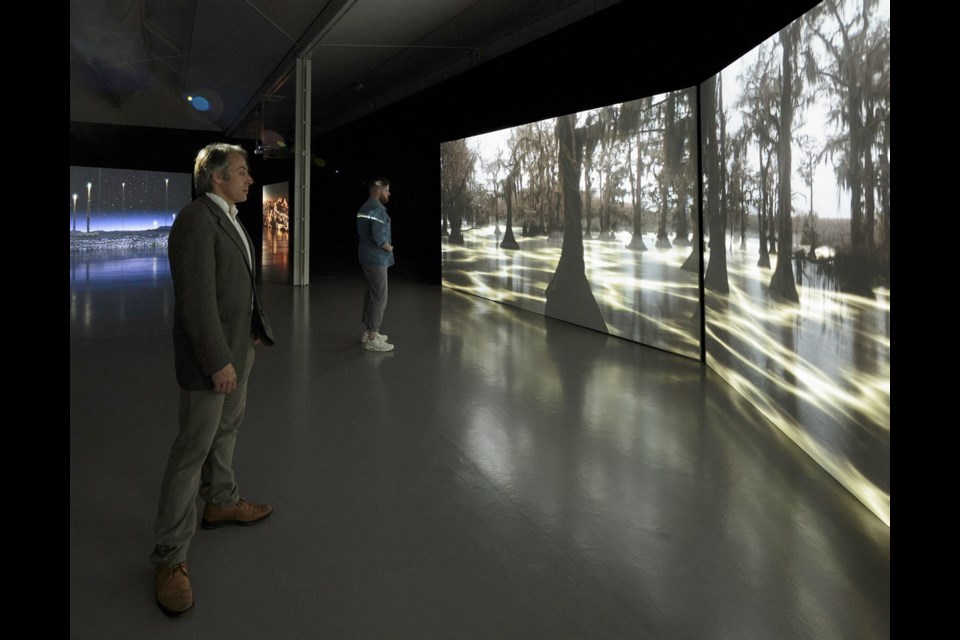Vancouver Island’s old-growth forests have inspired acclaimed digital artist Kelly Richardson to move to Victoria, to be closer to the inspiration the ancient stands of trees provide.
In particular, she has had her eye on Port Renfrew — dubbed the “tall-tree capital” of Canada — and is featuring it in a digital-art creation that will be shown at Imax theatres as part of a film series. The series will celebrate the 50th anniversary of Imax’s invention.
The Ontario-born Richardson is working as an associate professor of visual arts at the University of Victoria, and before that she was a lecturer in fine arts at Newcastle University in northern England.
Richardson, 45, said a visit to Victoria in 2016 to give a talk at UVic featured a trip to the Port Renfrew area’s Avatar Grove, which had a big influence on her decision to move here.
She said she was “phenomenally moved” at the sight of the grove.
The move to Victoria fell into place when there was a job opportunity at UVic.
“I had been living in England for 14 years,” Richardson said. “I really loved my life in the U.K., I was not looking to leave.”
But she said she could not pass up the opportunity to live close to Vancouver Island’s forests, something that fits with the basis of her art.
“Most of my projects focus on environmental issues, and I work with landscapes, always as a starting point in the works.”
Richardson said she is best known for creating large-scale video installations, with a video camera and a single-lens reflex camera her basic tools.
“The best way to describe them is that they’re moving pictures or paintings,” she said. “They’re not still images, but they are environments that viewers feel as though they can walk within.
“Everything’s moving, and then there’s sound that accompanies each video, which helps to convince the viewer of where they are.”
Special effects are added to achieve the final result, she said, and offered some examples.
“There’s images from a desert landscape where I’ve inserted rockets, what look like rockets endlessly leaving what is presumed to be planet Earth. Another image has yellow tendrils of light in it that were inserted, so it looks like either a toxic spill of some description or a bioluminescent life form that either existed in the past or might exist in the future.
“So there’s always multiple ways to read it.”
Conservation is a big part of her message, Richardson said.
“The work gets out there into the world, and on the one hand I want it to be enjoyable as artwork, but I want it to be more than that as well,” she said. “Environmentally, with climate change and the vast changes that we’ve made since the Industrial Revolution, we’re facing incredibly uncertain futures as a result.
“What I want people to do is to think about where we’re heading and why.”
Richardson’s art has an international following.
“I tend to show in museums around the world or festivals like the Sundance Film Festival.”
She has also been featured in many solo and group exhibitions, and is part of collections at such sites as the National Gallery of Canada, the Art Gallery of Ontario and the Albright-Knox Art Gallery in Buffalo, New York.



